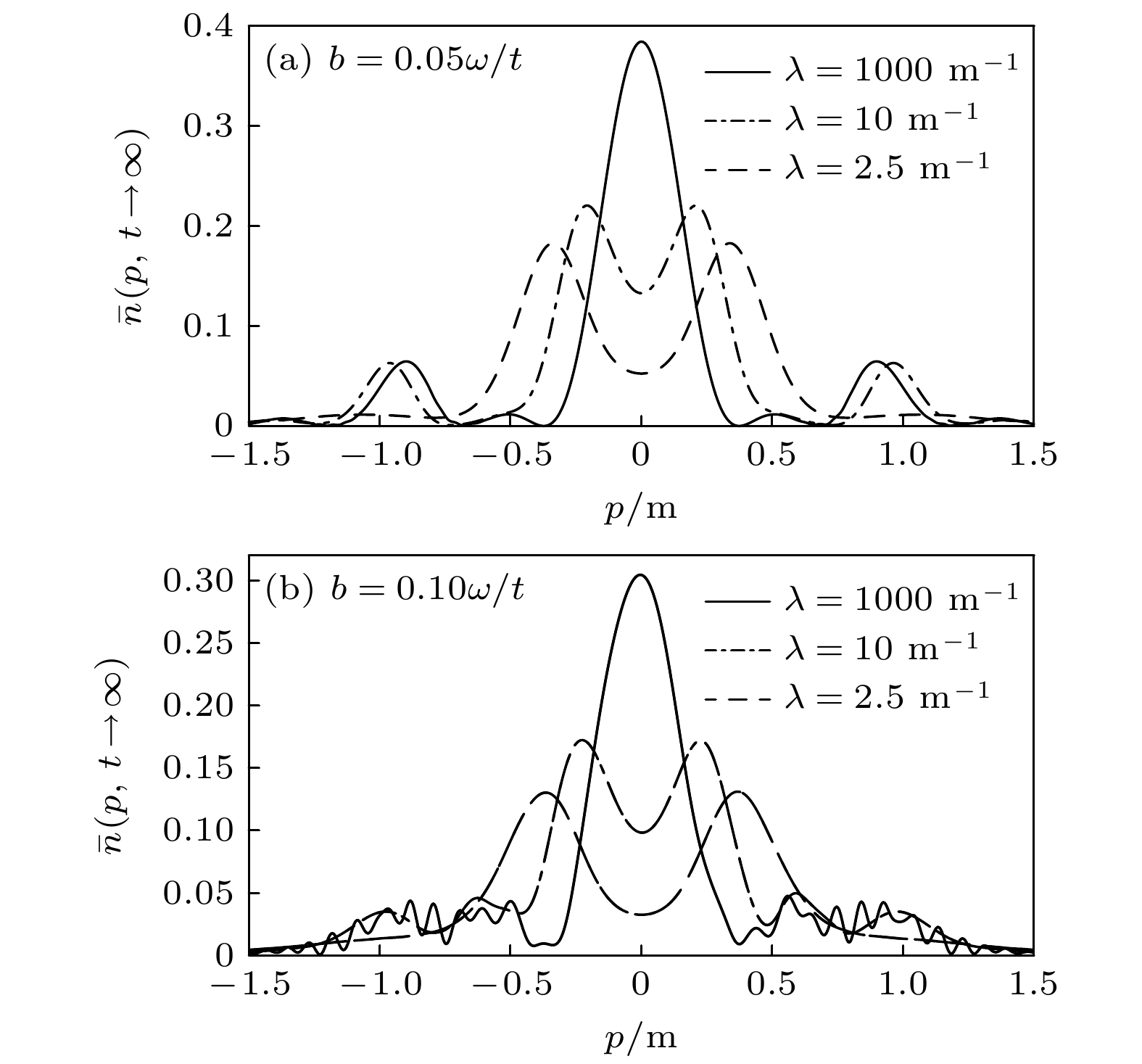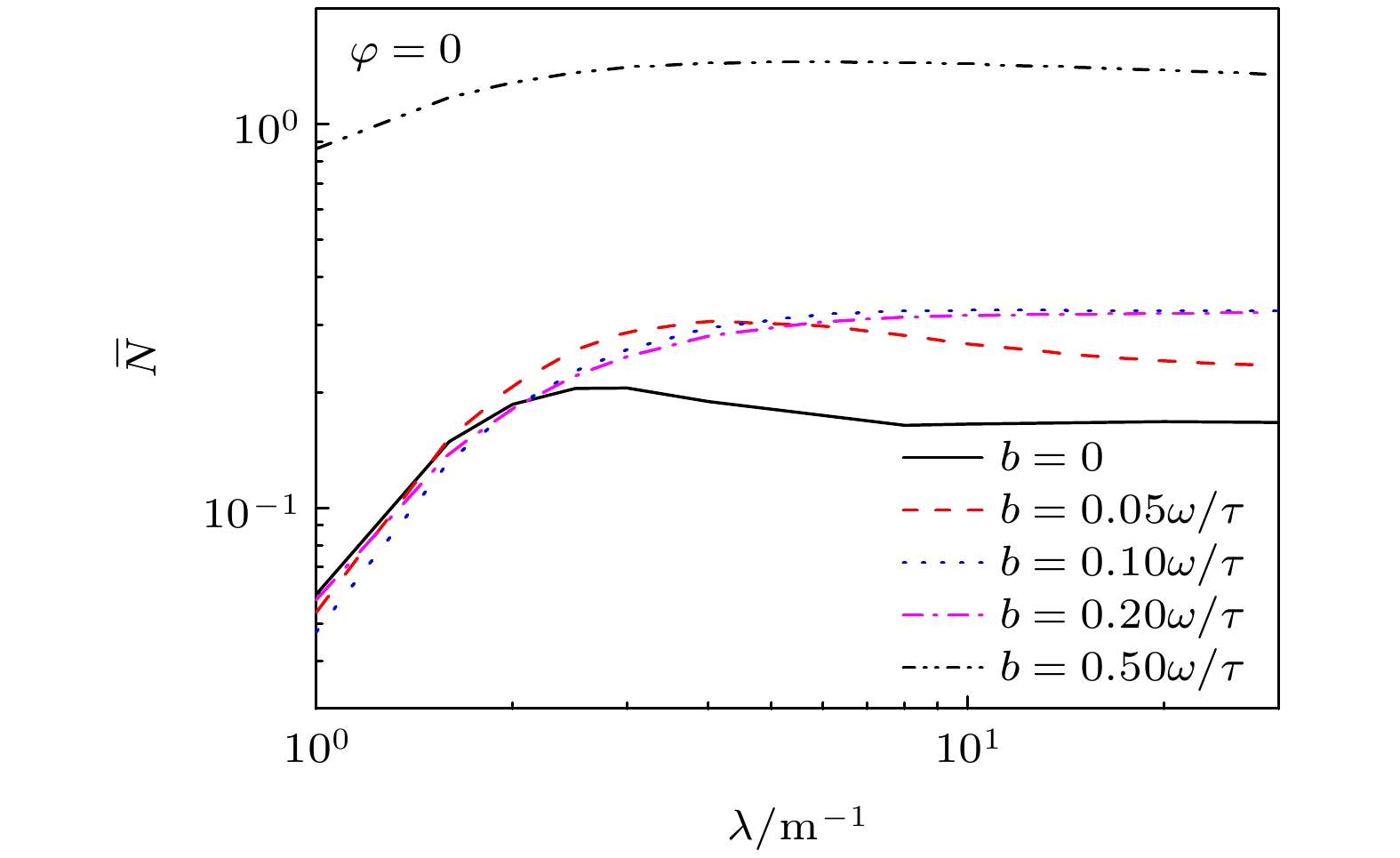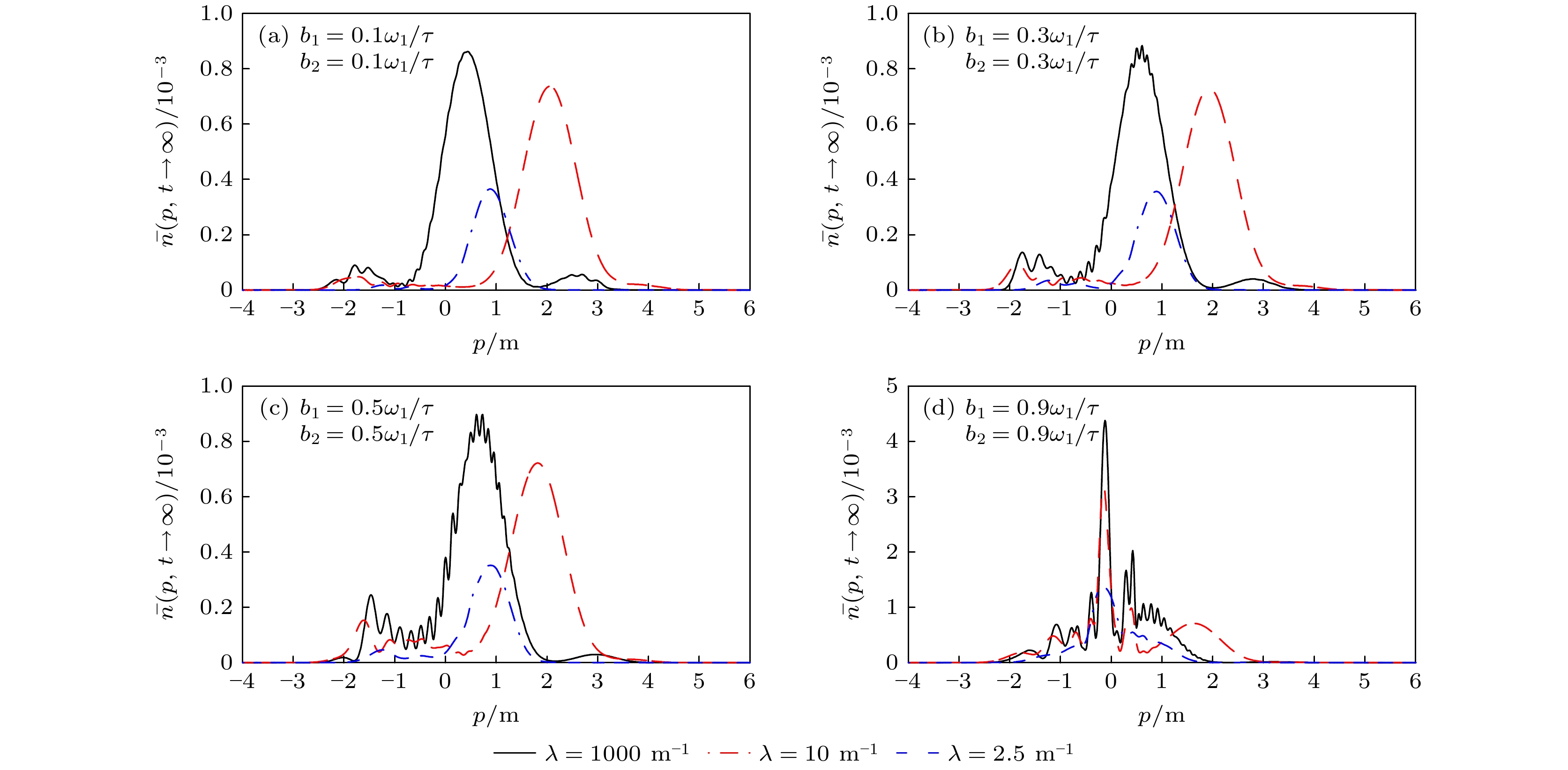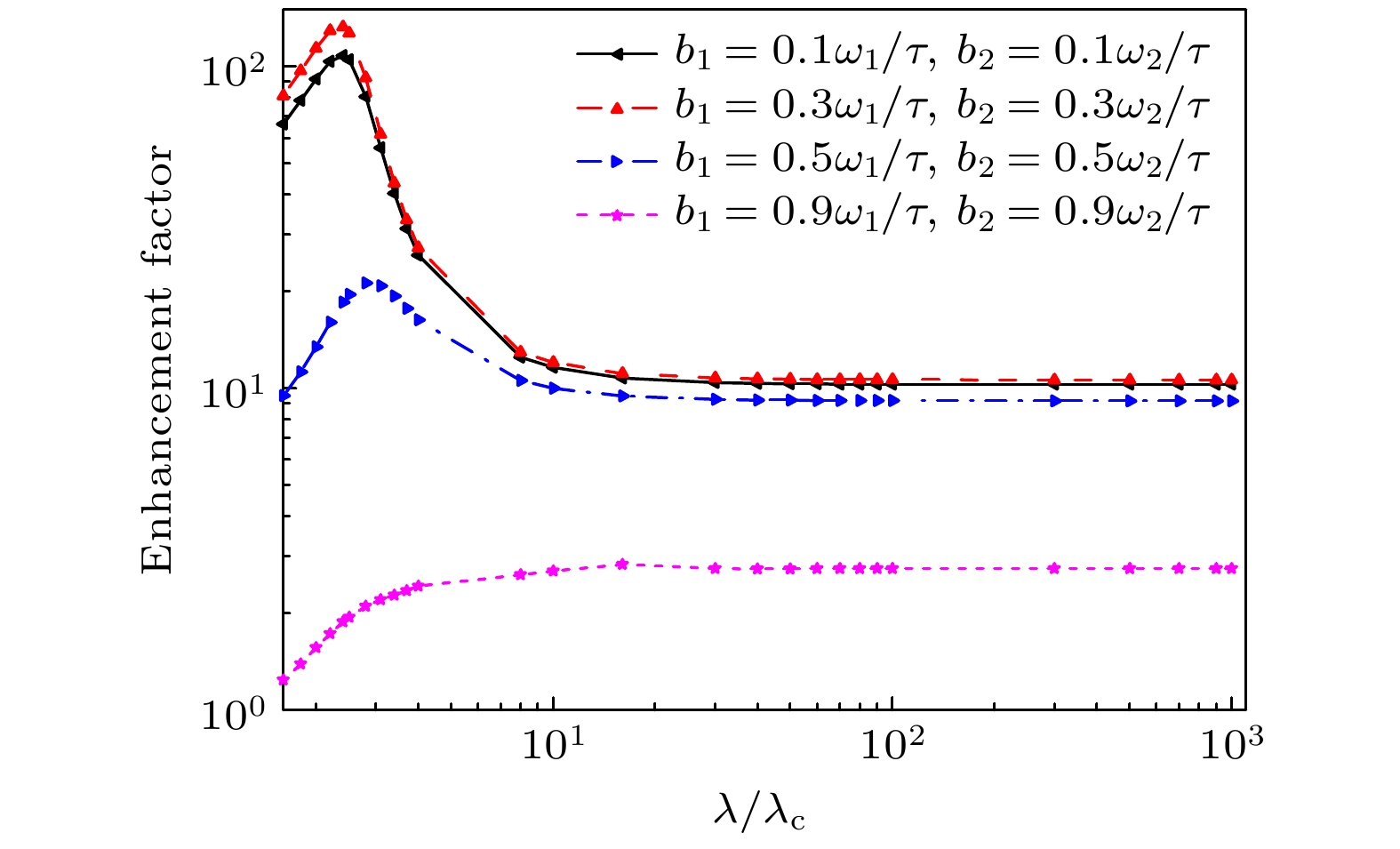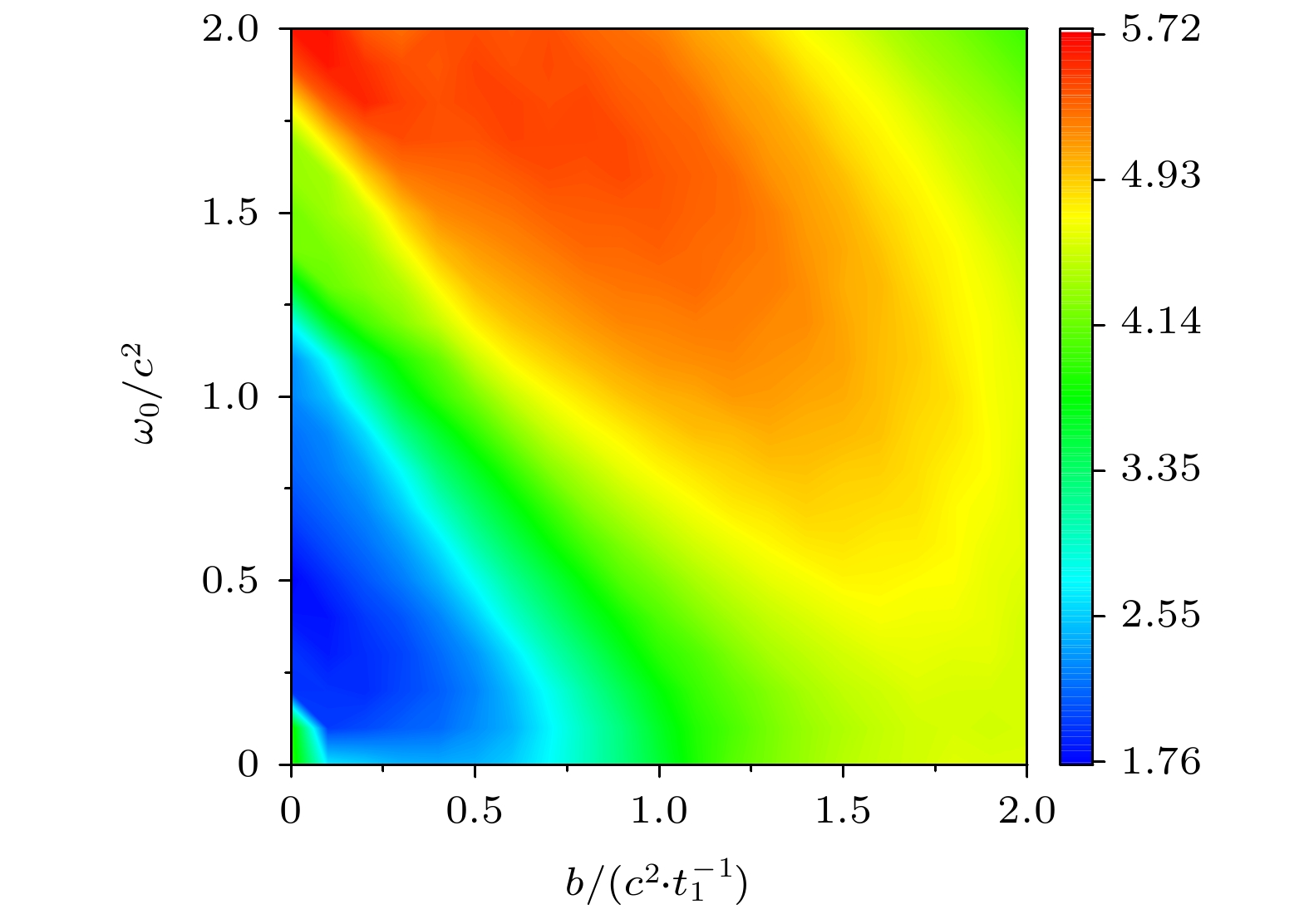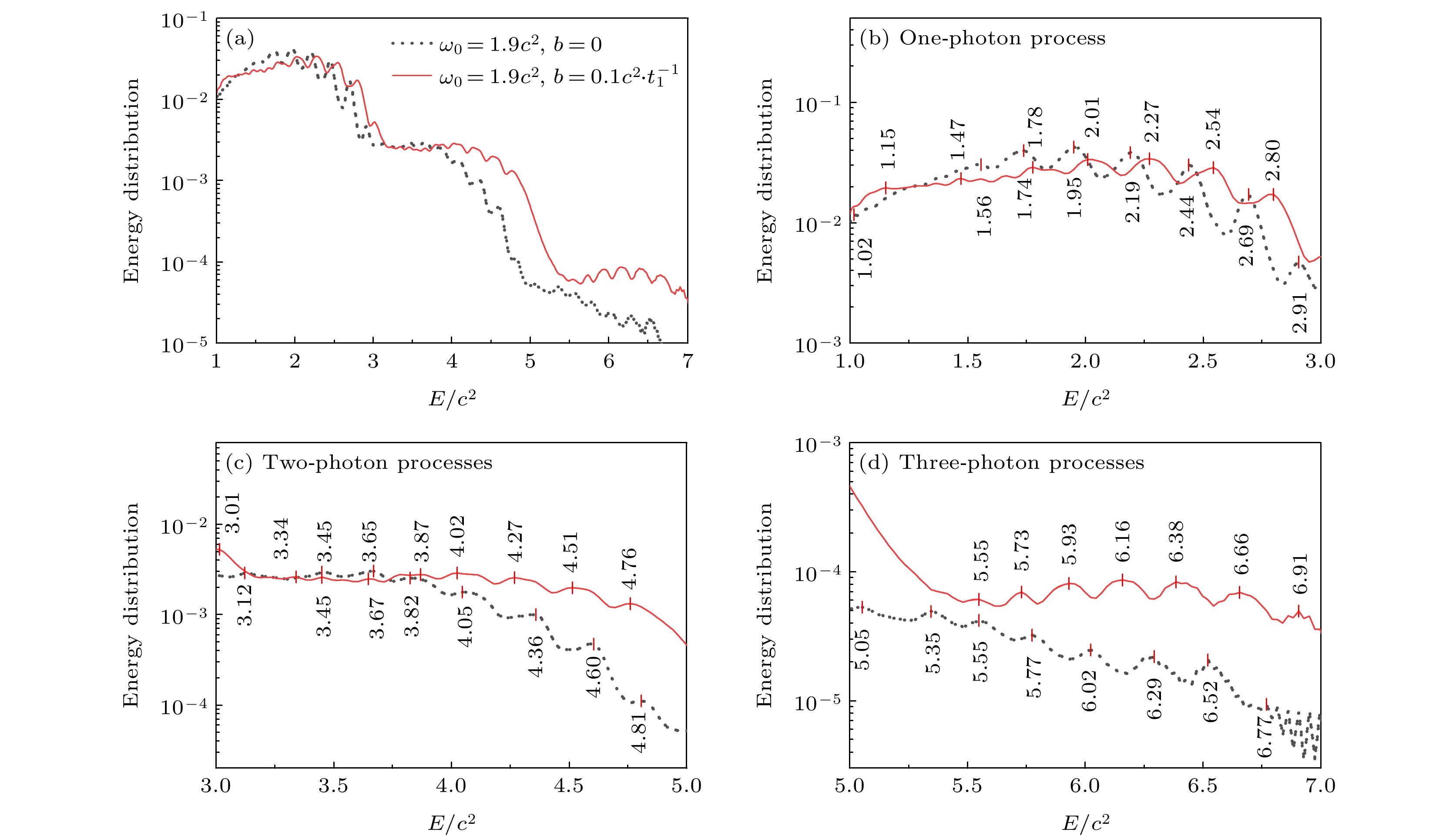-
在强背景场下真空产生正反粒子对的研究中, 频率啁啾对增强粒子对的产生起着关键作用. 本文介绍了狄拉克-海森伯-维格纳(Dirac -Heisenberg-Wigner)、求解量子弗拉索夫方程(quantum Vlasov equation)和计算量子场论等方法, 并详细综述了它们如何应用到空间非均匀场、均匀含时场以及外部势场中正负电子对产生的研究. 通过研究各种不同的场得到了不同参数(如场强和基准频率)下产生的粒子动量谱和粒子对产额, 发现当频率啁啾形式或/和啁啾强度改变时结果受到显著影响. 在低频场下啁啾增强的数密度可提高2—3个数量级, 这主要是因为啁啾增加了场的高频成分, 从而低频强场和高频弱场相结合的动力学辅助机制起到了很大的作用. 一般来说在高频情况下数密度只有几倍的提高, 说明动力学辅助作用被大大地抑制了. 在有空间变化的场情形下, 对于小空间尺度变化的场, 无啁啾时本身的数密度不高, 但啁啾可以对数密度有数量级的提高; 对于大空间尺度变化的场, 数密度逐渐趋于空间均匀的结果, 啁啾也能对数密度有几倍的提高. 通过Wentzel-Kramer-Brillouin近似和转变点结构的物理分析和讨论可以对相关的数值结果进行理解. 最后简要地给出了频率啁啾对粒子对产生增强效应可能的应用前景与展望.In this review article, we show an important aspect of electron-positron pair production from vacuum under strong background field where the frequency chirping plays a key role in enhancing the pair production. A series of researches on the enhancement effect of frequency chirp on electron-positron pair production in strong field is summarized. Three approaches are introduced, i.e. the Dirac-Heisenberg-Wigner formalism used to treat the spatial inhomogeneous field or/and multidimensional homogeneous time-dependent field, quantum Vlasov equation to cope with the one-dimensional homogeneous time-dependent field, and the computation quantum field theory employed to study the problem with external potential. Some interesting results about the momentum spectrum structure of created particle and the yielding of pair numbers are demonstrated for various different field parameters such as field strength and central frequency, in particular their significant influence on results when the frequency chirping form or/and strength are changed. In general, the number density can be improved by 2-3 orders of magnitude with the strengthening of frequency chirping in comparison with that without chirping for low frequency field, which is attributed to the effect that the dynamically assisted mechanism plays a significant role since the chirping expands the frequency spectrum of field. For high frequency field, however, this effect is suppressed so that the number density is enhanced by about a few times. For spatially inhomogeneous field, field changing on a small scale does not make the number density so high and the frequency chirping can enhance the yield in the order of magnitude, while the field changing on a large scale makes the number density to approach to that of homogeneous field and the chirping increases the yield by a few times. These numerical results can be understood by the Wentzel-Kramer-Brillouin (WKB) approximation and the structure of turning points. Finally the possible applicable prospects of the electron-positron pair production by the frequency chirping are presented briefly.
-
Keywords:
- electron-positron pair production /
- frequency chirping /
- strong field /
- quantum kinetic method
[1] Dirac P A M 1928 Proc. R. Soc. A 118 351
[2] Anderson C D 1933 Phys. Rev. 43 491
 Google Scholar
Google Scholar
[3] Sauter F 1931 Z. Phys. 69 742
 Google Scholar
Google Scholar
[4] Heisenberg W, Euler H 1936 Z. Phys. 98 714
 Google Scholar
Google Scholar
[5] Schwinger J 1951 Phys. Rev. 82 664
 Google Scholar
Google Scholar
[6] Ritus V I 1985 J. Sov. Laser Res. 6 497
 Google Scholar
Google Scholar
[7] Piazza A D 2011 Rev. Mod. Phys. 84 1177
[8] Gelis F, Tanji N 2016 Prog. Part. Nucl. Phys. 87 1
 Google Scholar
Google Scholar
[9] Strickland D, Mourou G 1985 Opt. Commun. 55 447
 Google Scholar
Google Scholar
[10] Ringwald A 2001 Phys. Lett. B 510 107
 Google Scholar
Google Scholar
[11] Yanovsky V P, Chvykov V, Kalinchenko G, Rousseau P, Krushelnick K 2008 Opt. Express 16 2109
 Google Scholar
Google Scholar
[12] Heinzl T, Ilderton A 2009 Eur. Phys. J. D 55 359
 Google Scholar
Google Scholar
[13] Marklund M, Lundin J 2009 Eur. Phys. J. D 55 319
 Google Scholar
Google Scholar
[14] Dunne G V 2009 Eur. Phys. J. D 55 327
 Google Scholar
Google Scholar
[15] Pike O J, Mackenroth F, Hill E G, Rose S J 2014 Nat. Photonics 8 434
 Google Scholar
Google Scholar
[16] https://www.eli -beams .eu/. [2022-1-21]
[17] Schuetzhold R, Gies H, Dunne G 2008 Phys. Rev. Lett. 101 130404
 Google Scholar
Google Scholar
[18] Bell A R, Kirk J G 2008 Phys. Rev. Lett. 101 2952
[19] Dunne G V, Gies H, Schützhold R 2009 Phys. Rev. D 80 111301
 Google Scholar
Google Scholar
[20] Piazza A D, E Lötstedt, Milstein A I, Keitel C H 2009 Phys. Rev. Lett. 103 170403
 Google Scholar
Google Scholar
[21] Bulanov S S, Mur V D, Narozhny N B, Nees J, Popov V S 2010 Phys. Rev. Lett. 104 220404
 Google Scholar
Google Scholar
[22] https://xcels.iapras .ru /news .html[2022-1-21]
[23] http://www.hibef.eu[2022-1-21]
[24] Nikishov A I 1969 Sov. Phys. JETP 30 660
[25] Brezin E, Itzykson C 1970 Phys. Rev. D 2 1191
 Google Scholar
Google Scholar
[26] Marinov M S, Popov V S 1977 Fortschr. Phys. 25 373
 Google Scholar
Google Scholar
[27] Nikishov A I 1985 J. Sov. Laser Res. 6 619
 Google Scholar
Google Scholar
[28] Gies H, Klingmüller K 2005 Phys. Rev. D 72 065001
[29] Dunne G, Wang Q H, Gies H, Schubert C 2006 Phys. Rev. D 73 065028
[30] Xie B S, Melike M, Sayipjamal D 2012 Chin. Phys. Lett. 29 021102
 Google Scholar
Google Scholar
[31] Schneider C, Schützhold R 2016 J. High Energy Phys. 02 164
 Google Scholar
Google Scholar
[32] Kluger Y, Eisenberg J M, Svetitsky B, Cooper F, Mottola E 1991 Phys. Rev. Lett. 67 2427
 Google Scholar
Google Scholar
[33] Alkofer R, Hecht M B, Roberts C D, Schmidt S M, Vinnik D V 2001 Phys. Rev. Lett. 87 193902
 Google Scholar
Google Scholar
[34] Abdukerim N, Li Z L, Xie B S 2017 Chin. Phys. B 26 020301
 Google Scholar
Google Scholar
[35] Krekora P, Cooley K, Su Q, Grobe R 2005 Phys. Rev. Lett. 95 070403
 Google Scholar
Google Scholar
[36] Lv Q Z, Liu Y, Li Y J, Grobe R, Su Q 2013 Phys. Rev. Lett. 111 183204
 Google Scholar
Google Scholar
[37] Wang L, Wu B B, Xie B S 2019 Phys. Rev. A 100 022127
 Google Scholar
Google Scholar
[38] Hebenstreit F, Alkofer R, Gies H 2011 Phys. Rev. Lett. 107 180403
 Google Scholar
Google Scholar
[39] Kohlfürst C 2015 Ph. D. Dissertation arXiv: 1512.06082
[40] Xie B S, Li Z L, Tang S 2017 Matter Radiat. Extremes 2 225
 Google Scholar
Google Scholar
[41] Kohlfürst C, Alkofer R 2018 Phys. Rev. D 97 036026
 Google Scholar
Google Scholar
[42] Ababekri M, Dulat S, Xie B S, Zhang J 2020 Phys. Lett. B 810 135815
 Google Scholar
Google Scholar
[43] Kohlfürst C 2020 Phys. Rev. D 101 096003
 Google Scholar
Google Scholar
[44] Hebenstreit F, Alkofer R, Dunne G V, Gies H 2009 Phys. Rev. Lett. 102 150404
 Google Scholar
Google Scholar
[45] Dumlu C K 2010 Phys. Rev. D 82 045007
 Google Scholar
Google Scholar
[46] Olugh O, Li Z L, Xie B S, Alkofer R 2019 Phys. Rev. D 99 036003
 Google Scholar
Google Scholar
[47] Orthaber M, Hebenstreit F, Alkofer R 2011 Phys. Lett. B 698 80
 Google Scholar
Google Scholar
[48] Ababekri M, Xie B S, Zhang J 2019 Phys. Rev. D 100 016003
 Google Scholar
Google Scholar
[49] Olugh O, Li Z L, Xie B S 2020 Phys. Lett. B 802 135259
 Google Scholar
Google Scholar
[50] Gong C, Li Z L, Xie B S, Li Y J 2020 Phys. Rev. D 101 016008
 Google Scholar
Google Scholar
[51] Wang K, Hu X H, Dulat S, Xie B S 2021 Chin. Phys. B 30 060204
 Google Scholar
Google Scholar
[52] Mohamedsedik M, Li L J, Xie B S 2021 Phys. Rev. D 104 016009
 Google Scholar
Google Scholar
[53] Li L J, Mohamedsedik M, Xie B S 2021 Phys. Rev. D 104 036015
 Google Scholar
Google Scholar
[54] Li Z L, Lu D, Xie B S 2015 Phys. Rev. D 92 085001
 Google Scholar
Google Scholar
[55] Li Z L, Li Y J, Xie B S 2017 Phys. Rev. D 96 076010
 Google Scholar
Google Scholar
[56] Li Z L, Xie B S, Li Y J 2019 J. Phys. B:At. Mol. Opt. Phys. 52 025601
 Google Scholar
Google Scholar
[57] 李子良, 努尔曼古丽·阿卜杜克热木, 谢柏松 2016 物理学进展 36 129
Li Z L, Abdukerim Nuriman, Xie B S 2016 Progress in Phys. 36 129
[58] 谢柏松, 李子良, 唐琐, 刘杰 2017 物理 46 713
 Google Scholar
Google Scholar
Xie B S, Li Z L, Tang S, Liu J 2017 Physics 46 713
 Google Scholar
Google Scholar
[59] Keldysh L V 1965 Sov. Phys. JETP 20 1307
[60] Bialynicki-Birula I, Gornicki P, Rafelski J 1991 Phys. Rev. D 44 1825
[61] Hebenstreit F 2011 Ph. D. Dissertation arXiv: 1106.5965
[62] Greiner W 2000 (3 rd Ed. ) (Berlin: Springer)
[63] Schmidt S M, Blaschke D, Röpke, G, Prozorkevich A V, Smolyansky S A, Toneev V D 1999 Phys. Rev. D. 59 094005
 Google Scholar
Google Scholar
[64] Wang L, Li L J, Mohamedsedik M, An R, Li J J, Xie B S, Zhang F S 2021 arXiv: 2109.05399
[65] Kamiński J Z, Twardy M, Krajewska K 2018 Phys. Rev. D 98 056009
 Google Scholar
Google Scholar
-
图 4 在调制幅度
$ b=1.0 $ 下不同啁啾调制频率$ {\omega }_{\mathrm{m}}=0, \mathrm{ }0.07, \mathrm{ }0.1 $ 时产生的粒子对的动量谱(取自参考文献[50])Fig. 4. Momentum spectra of produced pairs in the field Eq.(39) with
$ {\omega }_{\mathrm{m}}=0, \mathrm{ }\mathrm{ }\mathrm{ }\mathrm{ }0.07, \mathrm{ }0.1 $ for (a)–(c), respectively when$ b=1.0 $ is fixed (from Ref. [50]).表 1 空间尺度
$ \lambda =10 $ 时不同啁啾下(31)式对称啁啾场与(30)式的非对称啁啾场数密度及其比值(参看文献[52])Table 1. Reduced pair number and ratio of symmetric and asymmetric fields for different chirping when
$ \lambda =10 $ (from Ref. [52]) .b($ \omega /\tau ) $ $ {N}_{\mathrm{s}\mathrm{y}\mathrm{m}} $ $ {N}_{\mathrm{a}\mathrm{s}\mathrm{y}\mathrm{m}} $ $ {N}_{\mathrm{s}\mathrm{y}\mathrm{m}}/{N}_{\mathrm{a}\mathrm{s}\mathrm{y}\mathrm{m}} $ 0.05 0.2680 0.1663 1.612 0.10 0.3274 0.1561 2.097 0.20 0.3178 0.1791 1.774 0.50 1.4340 0.7474 1.919 表 2 优化空间尺度和啁啾参数下单个啁啾场或两个啁啾场的增强因子(参看文献[53])
Table 2. Optimal spatial scales related to the optimal enhancement factor at the chosen optimal chirp parameters (from Ref. [53]).
Different
chirpingChirp parameter
($ {\omega }_{i}/\tau $), ($ i=\mathrm{1, 2} $)Spatial
scale/m–1$\displaystyle\frac{N_{\rm 1s+2w} } {N_{\rm 1s}+ N_{\rm 2w}}$ Only $ {b}_{1} $ $ {b}_{1}=0.9 $ $ \lambda =2.4 $ 94.756 Only $ {b}_{2} $ $ {b}_{2}=0.3 $ $ \lambda =2.4 $ 133.584 $ {b}_{1} $ and $ {b}_{2} $ $ {b}_{1}={b}_{2}=0.3 $ $ \lambda =2.4 $ 132.517 表 3 不同的基频下产生的电子数目的最大值和最小值以及二者之间的比值(参看文献[64])
Table 3. The maximum, the minimum number of created electrons and the ratio between them for different fundamental frequencies (from Ref. [64]).
$ {\omega }_{0}/{c}^{2} $ $ {N}_{\mathrm{m}\mathrm{i}\mathrm{n}}(b=0) $ $ {N}_{\mathrm{m}\mathrm{a}\mathrm{x}} $ $ R({N}_{\mathrm{m}\mathrm{a}\mathrm{x}}/{N}_{\mathrm{m}\mathrm{i}\mathrm{n}}) $ 0.1 1.87 4.58 ($ b=1.8{c}^{2}/{t}_{1} $) 2.45 0.2 1.85 4.69 ($ b=1.7{c}^{2}/{t}_{1} $) 2.54 0.5 1.77 4.76 ($ b=1.6{c}^{2}/{t}_{1} $) 2.69 1.0 2.30 5.13 ($ b=1.2{c}^{2}/{t}_{1} $) 2.23 1.5 4.18 5.39 ($ b=0.8{c}^{2}/{t}_{1} $) 1.29 1.9 5.42 5.65 ($ b=0.1{c}^{2}/{t}_{1} $) 1.04 -
[1] Dirac P A M 1928 Proc. R. Soc. A 118 351
[2] Anderson C D 1933 Phys. Rev. 43 491
 Google Scholar
Google Scholar
[3] Sauter F 1931 Z. Phys. 69 742
 Google Scholar
Google Scholar
[4] Heisenberg W, Euler H 1936 Z. Phys. 98 714
 Google Scholar
Google Scholar
[5] Schwinger J 1951 Phys. Rev. 82 664
 Google Scholar
Google Scholar
[6] Ritus V I 1985 J. Sov. Laser Res. 6 497
 Google Scholar
Google Scholar
[7] Piazza A D 2011 Rev. Mod. Phys. 84 1177
[8] Gelis F, Tanji N 2016 Prog. Part. Nucl. Phys. 87 1
 Google Scholar
Google Scholar
[9] Strickland D, Mourou G 1985 Opt. Commun. 55 447
 Google Scholar
Google Scholar
[10] Ringwald A 2001 Phys. Lett. B 510 107
 Google Scholar
Google Scholar
[11] Yanovsky V P, Chvykov V, Kalinchenko G, Rousseau P, Krushelnick K 2008 Opt. Express 16 2109
 Google Scholar
Google Scholar
[12] Heinzl T, Ilderton A 2009 Eur. Phys. J. D 55 359
 Google Scholar
Google Scholar
[13] Marklund M, Lundin J 2009 Eur. Phys. J. D 55 319
 Google Scholar
Google Scholar
[14] Dunne G V 2009 Eur. Phys. J. D 55 327
 Google Scholar
Google Scholar
[15] Pike O J, Mackenroth F, Hill E G, Rose S J 2014 Nat. Photonics 8 434
 Google Scholar
Google Scholar
[16] https://www.eli -beams .eu/. [2022-1-21]
[17] Schuetzhold R, Gies H, Dunne G 2008 Phys. Rev. Lett. 101 130404
 Google Scholar
Google Scholar
[18] Bell A R, Kirk J G 2008 Phys. Rev. Lett. 101 2952
[19] Dunne G V, Gies H, Schützhold R 2009 Phys. Rev. D 80 111301
 Google Scholar
Google Scholar
[20] Piazza A D, E Lötstedt, Milstein A I, Keitel C H 2009 Phys. Rev. Lett. 103 170403
 Google Scholar
Google Scholar
[21] Bulanov S S, Mur V D, Narozhny N B, Nees J, Popov V S 2010 Phys. Rev. Lett. 104 220404
 Google Scholar
Google Scholar
[22] https://xcels.iapras .ru /news .html[2022-1-21]
[23] http://www.hibef.eu[2022-1-21]
[24] Nikishov A I 1969 Sov. Phys. JETP 30 660
[25] Brezin E, Itzykson C 1970 Phys. Rev. D 2 1191
 Google Scholar
Google Scholar
[26] Marinov M S, Popov V S 1977 Fortschr. Phys. 25 373
 Google Scholar
Google Scholar
[27] Nikishov A I 1985 J. Sov. Laser Res. 6 619
 Google Scholar
Google Scholar
[28] Gies H, Klingmüller K 2005 Phys. Rev. D 72 065001
[29] Dunne G, Wang Q H, Gies H, Schubert C 2006 Phys. Rev. D 73 065028
[30] Xie B S, Melike M, Sayipjamal D 2012 Chin. Phys. Lett. 29 021102
 Google Scholar
Google Scholar
[31] Schneider C, Schützhold R 2016 J. High Energy Phys. 02 164
 Google Scholar
Google Scholar
[32] Kluger Y, Eisenberg J M, Svetitsky B, Cooper F, Mottola E 1991 Phys. Rev. Lett. 67 2427
 Google Scholar
Google Scholar
[33] Alkofer R, Hecht M B, Roberts C D, Schmidt S M, Vinnik D V 2001 Phys. Rev. Lett. 87 193902
 Google Scholar
Google Scholar
[34] Abdukerim N, Li Z L, Xie B S 2017 Chin. Phys. B 26 020301
 Google Scholar
Google Scholar
[35] Krekora P, Cooley K, Su Q, Grobe R 2005 Phys. Rev. Lett. 95 070403
 Google Scholar
Google Scholar
[36] Lv Q Z, Liu Y, Li Y J, Grobe R, Su Q 2013 Phys. Rev. Lett. 111 183204
 Google Scholar
Google Scholar
[37] Wang L, Wu B B, Xie B S 2019 Phys. Rev. A 100 022127
 Google Scholar
Google Scholar
[38] Hebenstreit F, Alkofer R, Gies H 2011 Phys. Rev. Lett. 107 180403
 Google Scholar
Google Scholar
[39] Kohlfürst C 2015 Ph. D. Dissertation arXiv: 1512.06082
[40] Xie B S, Li Z L, Tang S 2017 Matter Radiat. Extremes 2 225
 Google Scholar
Google Scholar
[41] Kohlfürst C, Alkofer R 2018 Phys. Rev. D 97 036026
 Google Scholar
Google Scholar
[42] Ababekri M, Dulat S, Xie B S, Zhang J 2020 Phys. Lett. B 810 135815
 Google Scholar
Google Scholar
[43] Kohlfürst C 2020 Phys. Rev. D 101 096003
 Google Scholar
Google Scholar
[44] Hebenstreit F, Alkofer R, Dunne G V, Gies H 2009 Phys. Rev. Lett. 102 150404
 Google Scholar
Google Scholar
[45] Dumlu C K 2010 Phys. Rev. D 82 045007
 Google Scholar
Google Scholar
[46] Olugh O, Li Z L, Xie B S, Alkofer R 2019 Phys. Rev. D 99 036003
 Google Scholar
Google Scholar
[47] Orthaber M, Hebenstreit F, Alkofer R 2011 Phys. Lett. B 698 80
 Google Scholar
Google Scholar
[48] Ababekri M, Xie B S, Zhang J 2019 Phys. Rev. D 100 016003
 Google Scholar
Google Scholar
[49] Olugh O, Li Z L, Xie B S 2020 Phys. Lett. B 802 135259
 Google Scholar
Google Scholar
[50] Gong C, Li Z L, Xie B S, Li Y J 2020 Phys. Rev. D 101 016008
 Google Scholar
Google Scholar
[51] Wang K, Hu X H, Dulat S, Xie B S 2021 Chin. Phys. B 30 060204
 Google Scholar
Google Scholar
[52] Mohamedsedik M, Li L J, Xie B S 2021 Phys. Rev. D 104 016009
 Google Scholar
Google Scholar
[53] Li L J, Mohamedsedik M, Xie B S 2021 Phys. Rev. D 104 036015
 Google Scholar
Google Scholar
[54] Li Z L, Lu D, Xie B S 2015 Phys. Rev. D 92 085001
 Google Scholar
Google Scholar
[55] Li Z L, Li Y J, Xie B S 2017 Phys. Rev. D 96 076010
 Google Scholar
Google Scholar
[56] Li Z L, Xie B S, Li Y J 2019 J. Phys. B:At. Mol. Opt. Phys. 52 025601
 Google Scholar
Google Scholar
[57] 李子良, 努尔曼古丽·阿卜杜克热木, 谢柏松 2016 物理学进展 36 129
Li Z L, Abdukerim Nuriman, Xie B S 2016 Progress in Phys. 36 129
[58] 谢柏松, 李子良, 唐琐, 刘杰 2017 物理 46 713
 Google Scholar
Google Scholar
Xie B S, Li Z L, Tang S, Liu J 2017 Physics 46 713
 Google Scholar
Google Scholar
[59] Keldysh L V 1965 Sov. Phys. JETP 20 1307
[60] Bialynicki-Birula I, Gornicki P, Rafelski J 1991 Phys. Rev. D 44 1825
[61] Hebenstreit F 2011 Ph. D. Dissertation arXiv: 1106.5965
[62] Greiner W 2000 (3 rd Ed. ) (Berlin: Springer)
[63] Schmidt S M, Blaschke D, Röpke, G, Prozorkevich A V, Smolyansky S A, Toneev V D 1999 Phys. Rev. D. 59 094005
 Google Scholar
Google Scholar
[64] Wang L, Li L J, Mohamedsedik M, An R, Li J J, Xie B S, Zhang F S 2021 arXiv: 2109.05399
[65] Kamiński J Z, Twardy M, Krajewska K 2018 Phys. Rev. D 98 056009
 Google Scholar
Google Scholar
计量
- 文章访问数: 9060
- PDF下载量: 144
- 被引次数: 0













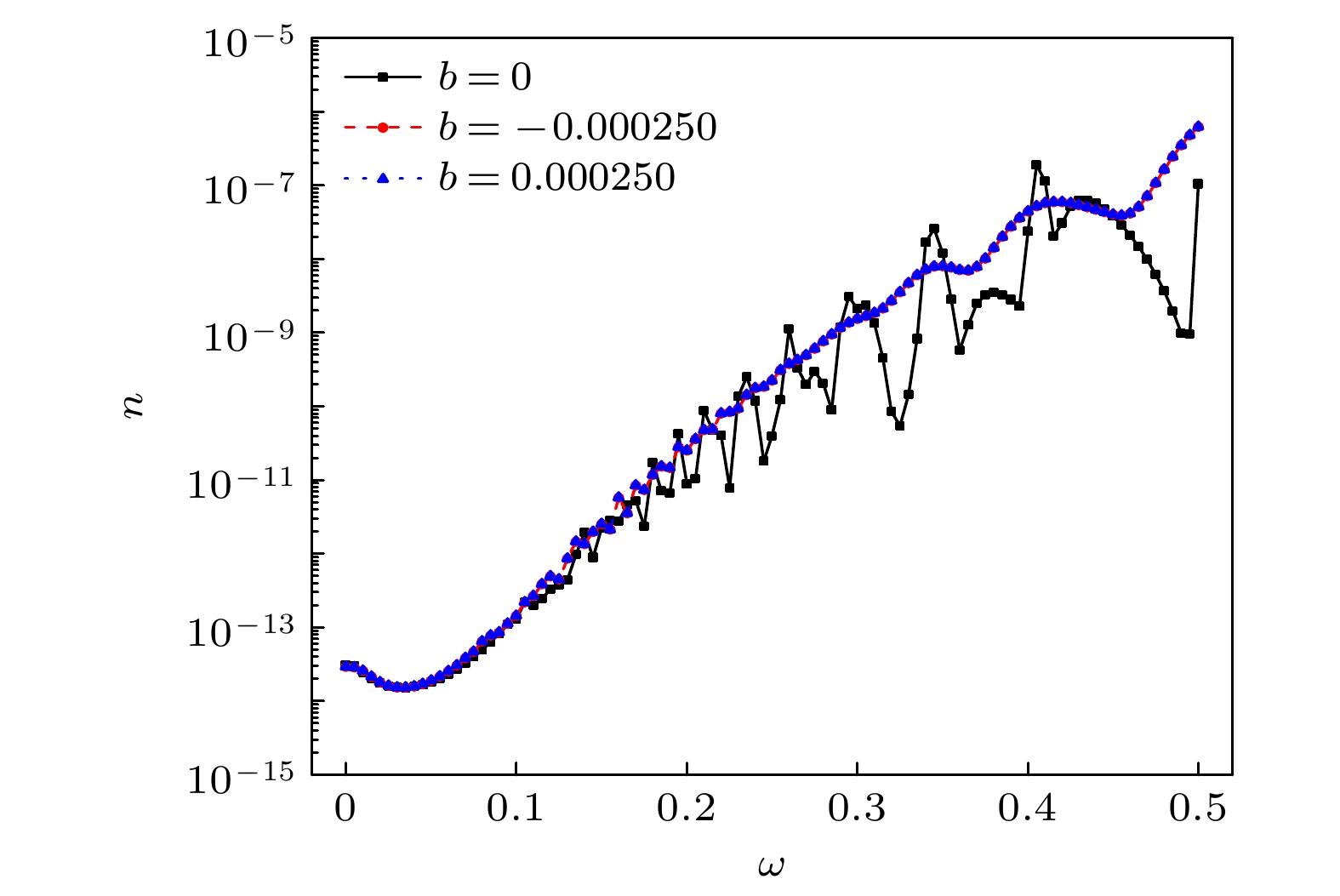
 下载:
下载:








